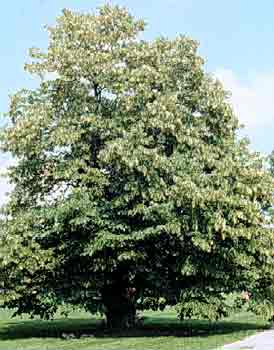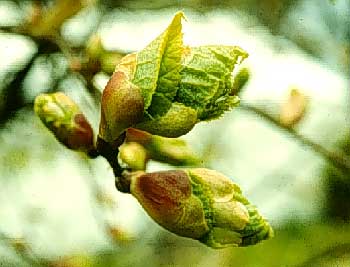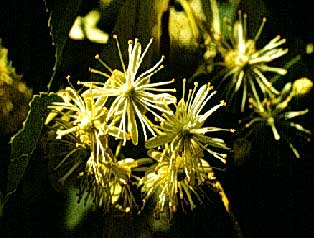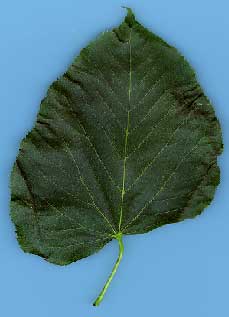 American Linden - Tilia americana
American Linden - Tilia americana
Basswood Family (Tiliaceae)
- Native habitat: Canada south to Alabama, west to Texas, Kansas and North Dakota.
- Growth habit: Pyramidal when young then becoming rounded with maturity. Lower branches droop but are upturned at the ends.
- Tree size: American linden grows to 60 to 80 feet tall with a spread of one-half to two-thirds the height at a medium rate. Soil condition and fertility strongly influence height and rate of growth.
- Flower and fruit: Clusters of small, fragrant, pale yellow flowers hang midway from a long, leafy bract. Flowers become clusters of pea-sized nutlets.
 Leaf: The characteristic 4- to 8-inch heart-shaped leaves are coarse-toothed, dark green above and paler green below. Fall color is not remarkable.
Leaf: The characteristic 4- to 8-inch heart-shaped leaves are coarse-toothed, dark green above and paler green below. Fall color is not remarkable.- Hardiness: Winter hardy to USDA Zone 3b.
- ‘Fastigiata' - This tree is called the pyramidal American linden because of its narrow form.
- ‘Redmond' - Was originally listed as a form of T. x euchlora. A densely pyramidal tree with leaves that, while large, are smaller than those of T. americana.
- ‘Rosehill' - A fast-growing American linden, it is described as an improved selection.
American linden was cultivated in North America as early as 1752. The tree's flowers are attractive to bees and linden is an important source of excellent honey. Hollow linden trees found in the woods are often filled with honey. The attractive white wood of linden is often used for beehive honey frames. The fragrant flowers are also distilled for use in perfumes.
The tree's edible leaves have been used for livestock and human consumption and the fibrous, pliable inner bark (bast) was a significant source of fiber for ropes, cords, mats and nets used by Native Americans and early European settlers.Because it is a source of bast, the common name "basswood" is derived. Oil from the linden seed pod has been extracted and used as a substitute for olive oil.
The Kentucky champion tree (110 feet tall) is in the Lexington Cemetery. American linden is best used as a park tree or for large landscapes. In Europe, various species of linden are pruned to form above-ground hedges.
The genus name, Tilia, is the Latin name for the linden or lime tree (no relation to the citrus tree). Swedish botanist Carolus Linnaeus, who developed the system of binomial nomenclature, took his name from a large linden tree on his family's property.



